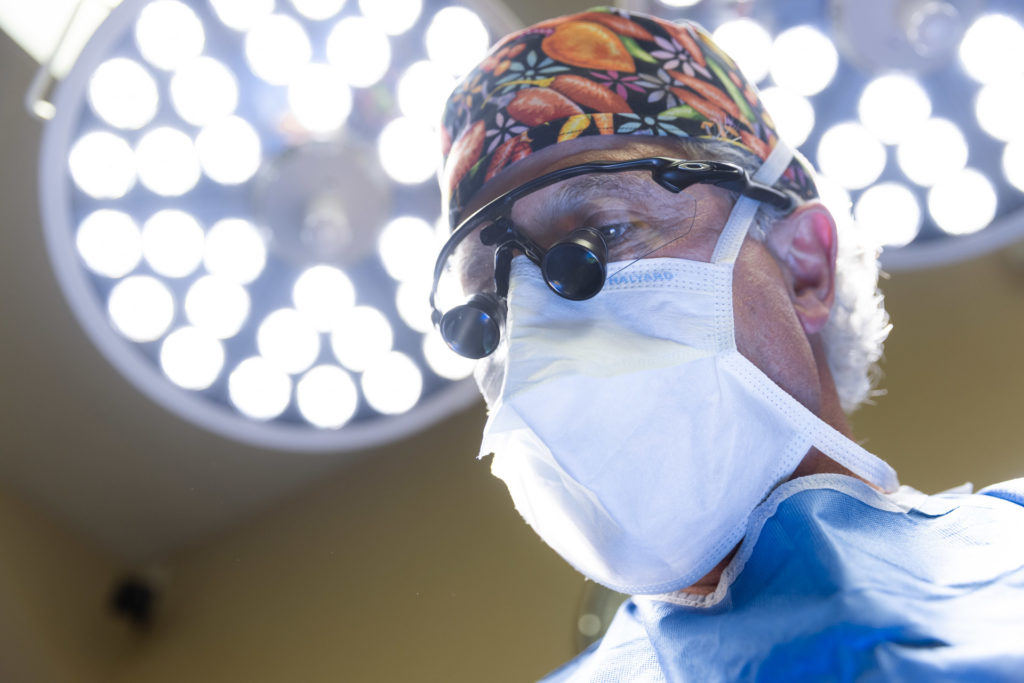A Comprehensive Guide to Breast Augmentation Surgery in Southlake

What is the difference between breast implants and breast augmentation surgery?
Oftentimes people use the phrases, “breast augmentation,” and “breast implants” interchangeably. Essentially they mean the same thing, but their true definitions are slightly different. Breast augmentation surgery is the procedure which enables breast implants to be inserted. Also called breast enhancement surgery, the procedure enhances the bust size based on the size of the implants. Keep reading to learn about the different types of implants!
What does breast augmentation surgery in Southlake treat?
There are a variety of reasons why one might decide to undergo breast augmentation surgery, including:
- Desire to enlarge naturally small breasts
- Correction of disproportionate size of breast with body
- Augment partial or total breast loss
- Correct asymmetrical breasts
Breast augmentation can also be paired with a breast lift to help lift and support sagging breasts.
Breast augmentation surgery in Southlake: The basics
So what exactly is breast augmentation? Simply put, it’s a surgical procedure performed by a board certified plastic surgeon to enlarge the breasts. This is done by inserting artificial implants into a pocket behind the breasts.
Before your procedure, you and your surgeon will have a consultation to discuss your desired results. Breast augmentation surgery in Southlake is highly customizable, so your surgeon will tailor the procedure to your unique concerns and goals. Once you and your doctor have decided on the appropriate factors, like the type and size of your implants, you will be scheduled for your procedure!
What are the types of breast implants?
At Southlake Plastic Surgery we use two types of FDA approved breast implants: silicone and saline. Each has its own benefits, and you and your doctor will discuss which one is the best option for you. Here are some things to consider about the different types.
Silicone:
- Made with a thick, gel-like silicone with a silicone casing
- Very natural feel similar to that of organic breast tissue
- FDA approved for use in patients age 22 and older
Saline:
- Made with sterile saltwater, or saline solution, and encased with silicone
- Saline has the same saltwater composition as the body, so it poses no health risk should it rupture
- Inserted empty during the procedure and then filled with saline by the surgeon
- FDA approved for use in patients age 18 and older
Depending on your lifestyle, age, desired outcomes, and other factors, your surgeon will help you decide which of these is the best option for you.

What the consultation looks like
Breast augmentation is not a one-size-fits-all approach (pun intended). Your doctor can tailor the procedure in a specific way to meet your unique aesthetic goals. It is important to ask lots of questions at your consultation and to be upfront about your desired results.
Your surgeon will guide you through the steps of the procedure, and offer any recommendations based on the information you provide. At your consultation, you and your doctor will discuss:
- Which type of implant to go with
- Which incision technique is right for you
- The size and shape of your new implants
- The overall desired outcome of the surgery
- Price factors
- Recovery period
Procedure details: Incision types and surgery techniques
Your incisions play a huge role in how the surgery will be performed, so you want to be informed about what will happen during your surgery. There are four major incision techniques that can be used during a breast augmentation surgery in Southlake.
-
Under the breast (inframammary incision)
This technique makes an incision along the bottom of the breast, following the natural curve to disguise any scarring. This is the most commonly used technique at Southlake Plastic Surgery. It has the lowest rate of infection, and has several advantages over the other techniques, including:
- Allows the surgeon direct access to the site
- Easy for the surgeon to manipulate the implant into the correct placement
- Conceals scarring effectively
- Allows for quick healing
Additionally, if the implants need to be replaced or removed, this same incision can be used several times.
-
Around the nipple (periareolar incision)
Using this technique, the surgeon aims to disguise any scarring by hiding the incision in the naturally darker pigmentation of the areola. There is a minor risk involved in this method that the patient could lose her ability to nurse, so this technique is best for those who don’t want children or aren’t having anymore.
-
Through the belly button (umbilical incision)
This is a laparoscopic approach, which is the least invasive incision technique. However, this technique is not commonly used to place breast implants due to a high risk of folding or rotating before final placement.
The incision is made along the rim of the belly-button, effectively hiding any scarring. This technique requires the surgeon to implement the use of an endoscope, which is a thin tube with a camera on the end that will make a path from the incision site to the breast.
-
Under the armpit (transaxillary incision)
The incision is made under the armpit to gain access to the breast. The scarring for this incision is the most noticeable, as the armpit is a high-movement area which causes stretching and additional scarring. There is also a risk that the implant will rotate while the surgeon attempts to place it.
If your surgeon uses the transaxillary incision for your first breast augmentation surgery, they won’t be able to use the same incision should you need or want a replacement. You will have to proceed with one of the different techniques. You and your surgeon will discuss this prior to the operation, and make a choice about which one is the best option for you.
Take a look at our before and after gallery here!
Placement of implants
The breast is made of glandular and fatty tissues and rests atop the muscles of the chest called the pectoral muscles. Surgeons don’t insert breast implants into the actual tissue of the breast; Instead they place them in one of the following ways:
-
Over the muscle (subglandular)
For this placement, the implant goes directly under the tissue of the breast and sits atop the pectoral muscles. Recovery is fast for this technique, as it doesn’t require much stretching of the muscles.
Depending on the amount of glandular tissue you already have, this placement provides very natural results. There is no unnatural breast movement due to muscle flexion, and the implant moves naturally with the organic tissue of the breast. However, if you are someone with very little natural breast tissue, there could be potential for greater visibility of implant edges.
A disadvantage of this method is that it can occlude mammogram reading, as it hides the natural tissue of the breast. Additionally, as the natural breasts begin to sag or droop over time, the implant will stay in the same place, resulting in what appears to be a bulge on the chest.
-
Under the muscle (submuscular)
If you and your doctor decide on this approach, your doctor will place the implants under the glandular tissue of the breast and partially behind the pectoral muscles.
Your doctor might recommend this placement option if you have less natural fatty tissue in the breast, thus reducing potential visibility (rippling).
This placement provides optimal contouring as the natural shape of the breast sits atop the implant, but it requires more downtime during recovery. This is Southlake Plastic Surgery’s preferred placement, as it shows less of the implant edge and does not occlude mammogram views.
Your surgeon will help you decide which of these options is right for you based on your lifestyle and desired results.

Recovery and results
Breast augmentation is an outpatient procedure, meaning you will be able to leave within a few hours after completing your operation. We will monitor you in our comfortable post-operative care rooms until we can release you into the care of a friend or family member.
For the first few days after a breast augmentation surgery in Southlake, patients report feeling fatigued, sore, and some pain in their chest, which can be alleviated by pain meds prescribed by your doctor.
After the first week most patients feel well enough to resume day to day activities, but you should refrain from lifting and exercising to allow for proper healing.
You’ll be able to see immediate results, but over the course 4-6 weeks, the implants will settle into their pockets, and the incision will heal.
What if one of them ruptures?
Though rare, during the lifetime of the implant, its silicone casing may tear or rip. This can happen to either silicone or saline implants, but with a saline implant there are no health risks. This is because the body easily absorbs saline solution.
If your saline implant were to tear, you would notice a change in the size and shape of your breast. It would appear deflated, which is a good indicator that something is amiss. If this happens, you can simply reach out to us to schedule your breast implant replacement.
Silicone implants today do not leak like they did in the past. Silicone has a very firm texture, and if the casing bursts, the putty-like silicone on the inside stays the same shape, so that it is easier to remove if there is a rupture. A rupture can be detected by an MRI.
If a rupture of a silicone implant were to go undetected, it could cause health issues. A common result of rupture is capsular contracture where, upon healing, the scar tissue hardens around the implant. Most implant manufacturers’ warranties cover this condition during the first year.
Your surgeon will discuss potential risks in detail with you prior to the breast augmentation surgery.
How long does the surgery last?
Typically, a breast augmentation surgery in Southlake lasts about 1 to 2 hours.
Will I be under for the whole surgery?
Yes, your surgeon will administer a general anesthetic so there is no pain involved with the actual procedure.
Start your breast augmentation journey
There is no better time than the present to begin your breast augmentation journey! schedule a consultation online or call us at 817-442-8900. We would be happy to answer any questions you may have about breast augmentation surgery in Southlake!


